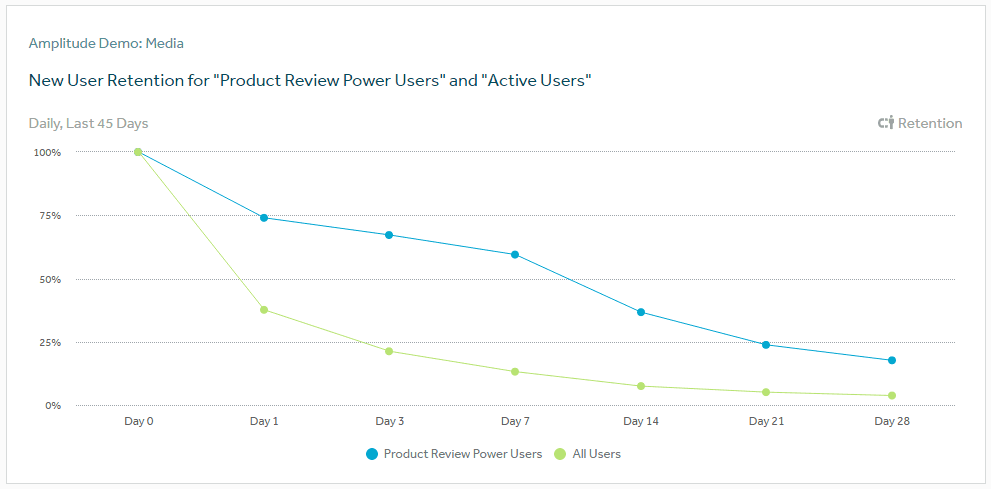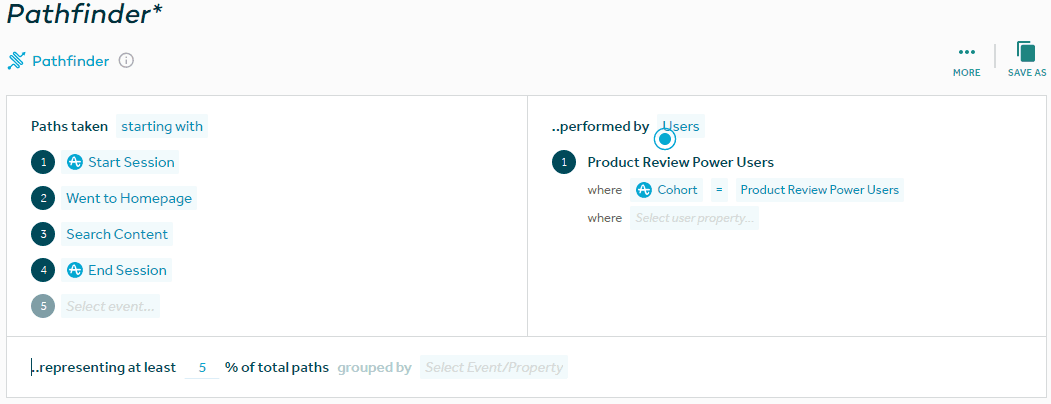Don’t Build Products Just for Power Users
Discover why you should get feedback from all customer segments and review behavioral data before adding more product features.
Their name says it all, power users. Users with power. They use your product regularly and as a result, know it inside and out. If your product has special features, they know about them and use them religiously. If your product needs an update or two, power users will let you know. They’re your most engaged users, which make them valuable. They reach out to you first and give you feedback. Unlike average users who wait to hear from you, power users leave comments, in-app reviews and email you. But just because you receive an outpouring of feedback from them, doesn’t mean you’re at their beck and call. They’re important, but they shouldn’t dictate everything you do. Instead, build products that cater to power_ and_ average users without alienating anyone. Once you know who your power users are, the “balance” is building a product everyone finds useful and incorporating user feedback.
Let’s dive into how you do that.
Identify your power users
Create behavioral cohorts
Start by creating behavioral cohorts. Do this by defining the actions that will categorize a the different types of users, i.e. power user vs. average user. If you have a product review app, and know that people who spend time searching for and reading reviews have higher long-term engagement, then a power user might be defined as users who searched for content at least 15 times in the last 30 days. Users who don’t fall into this category are your average users. With your cohorts you can track things like how many times each group used your app and their retention. In this example, power users are retained at a higher rate than average users. Related: Why You Need Cohorts to Improve Your Retention


Track user actions
Once you have your cohorts, track what each group does in your app. This added step is useful for verifying the groups because it helps you understand the exact steps they take in your app. Power users will have multiple paths and use more features than average users. You have the choice to track by power users vs. average users or go deeper and identify specific paths taken within each group. This gives an even more enhanced look into which paths are the most popular with each cohort.

Moving average users to power users
Remember, power users are a good thing, you just shouldn’t focus all of your attention on them. In reality, they probably only make up a small percentage of your total users so it doesn’t make sense to only build for them. Doing so means you’re not working on attracting new users. Your goal should be to attract new users and turn them into average users who become power users. The more users that become power users, the better for you because of increased user engagement. We just looked at tracking user paths in your product so with a deep dive into specific paths for power users, you can create a flow that encourages average users to do the same. So if searching for content helps that move, set up CTAs that keep new and average users in the app longer. The longer they’re in it, the more they’re searching. You want all of your users to be successful so lay out a path that’s easy for average users to adopt and leaves them eager to learn more about how it can help them.

Don’t get carried away with features
Trends change quickly. Just look at how we communicate. Email’s still kicking around but there are tons of messaging apps and platforms like Slack that dominate communication. Some of these changes are made to stay competitive while others are done at the request of power users. So in order to keep them happy, you add more features. But before you know it, your product isn’t exactly what you set out to make it. You end up with so many features that all of your users are confused because it’s harder to find what they want, or they don’t understand how to use the new features. Remember Apple’s MobileMe? It didn’t last long because it was an added feature that didn’t make sense to users. At the time it strayed away from Apple’s core focus — computers and devices. [Source] Chances are the features power users are asking for are warranted. But because they use your product on a different level than average users, approach new features carefully. To avoid complicating your product, only offer each group features they need. Here are some options:

- **Run beta tests that are only available to a select group of power users. **Choose which features you’ll offer and either ask a small group of power users to test them out for a month or make it available to power users you choose — like influencers. Ask for feedback and make the user approved features available to all power users. Allow average users the choice to opt-in and turn on these features, and some might be interested.
- Offer premium or subscription services for a fee. This way average users remain satisfied with status quo and power users are happy because they got the features they asked for. Since power users are loyal to your product and use every part of it frequently, they’ll be more likely to pay for bonus features. It also gives the feeling of prestige because this is something only they have access to.
- Offer tiers within a paid subscription. If all users pay for your product, then tiers give them the opportunity to choose the features they want. For example, Intuit is a complex product that offers different types of productivity software. Average or self-employed users can access “basic” features like tax prep and expense tracking while power or small business users can access more enhanced features like payment scheduling and inventory tracking. Each tier is offered at a slightly higher price than the tier before it so users can choose the package that best meets their needs.
Balance feedback sources
Power users know you’re listening and want to share feedback…often. They’re proactive so they’ll leave comments on your website, tag you on social media or send emails. It’s important that you listen to their feedback because they have lots of insight into your product. They’ll take their experience and use it to come up with suggestions to help you make your product better. After all, they know how to use your product and where to find the information they need. Related post: Confirmation Bias in Product Management and How to Avoid It The key takeaway here is that listening to your customers keeps you in tune with their needs. [Source] However, don’t rely solely on their feedback as your main source for product updates. You have to figure out if the issues power users have identified only apply to them or the entire user base. Here’s how to tell:

- **Ask average users for their feedback. **Reach out to them via email campaigns, surveys, social media campaigns, etc. How they respond will tell you whether or not power users have uncovered a widespread issue. If power user feedback is on point, then explore the suggestion more and figure out if it needs tweaks or if it’s ready to go. If average users aren’t experiencing the same issues, you can either pass up on the suggestion or find a middle ground that works for everyone.
- **Use your analytics for additional average user feedback. **Despite your best efforts to get real-time feedback from average users, they won’t all respond. This is where your analytics come in handy because you can track how they use your product. If they abandon a process at the same point as power users, perhaps there’s merit to what power users are telling you.
- Invite power users to walk you through the suggestion. Hold events where power users can come and talk to you. Use the opportunity to let them explain their product suggestions and walk through why they think they’re necessary. Perhaps there’s a solution they weren’t aware of. If so, share it with them and ask for feedback after a few months.
- **Do some market research. **You want to stay ahead of your competitors. A little research into their practices will give you insight into whether they’ve tried this new suggestion and how it worked out for them. If it was a major flop and they proved that users in general don’t find something useful in the long-term, you can save yourself time and resources this way.
Making it work for you
There’s no doubt that power users are important to your business. They’re your advocates and do a great job of helping you reach your product goals. But remember, they’re not your only_ _users. Listen to all of your users to make sure that your product continues to meet their collective needs. Average users might need a little coaxing to get some feedback but it’s worth the effort. To encourage feedback from them to balance out what you’re hearing from power users, offer small rewards, like discounts. Hearing from both sides is the only way you’ll really know if your product is doing what you promise it will.
Comments
Tucker K: GREAT BLOG, Mr. Dondanville

Mark Dondanville
Former Enterprise Success Manager, Amplitude
Mark is formerly part of the Customer Success Team at Amplitude. He has been working in the Success realm for 6 years, and thoroughly enjoys interacting with customers and helping them find their “aha moments.” A native of LA he also enjoys nothing more than rooting for the Dodgers while living in San Francisco.
More from Mark




